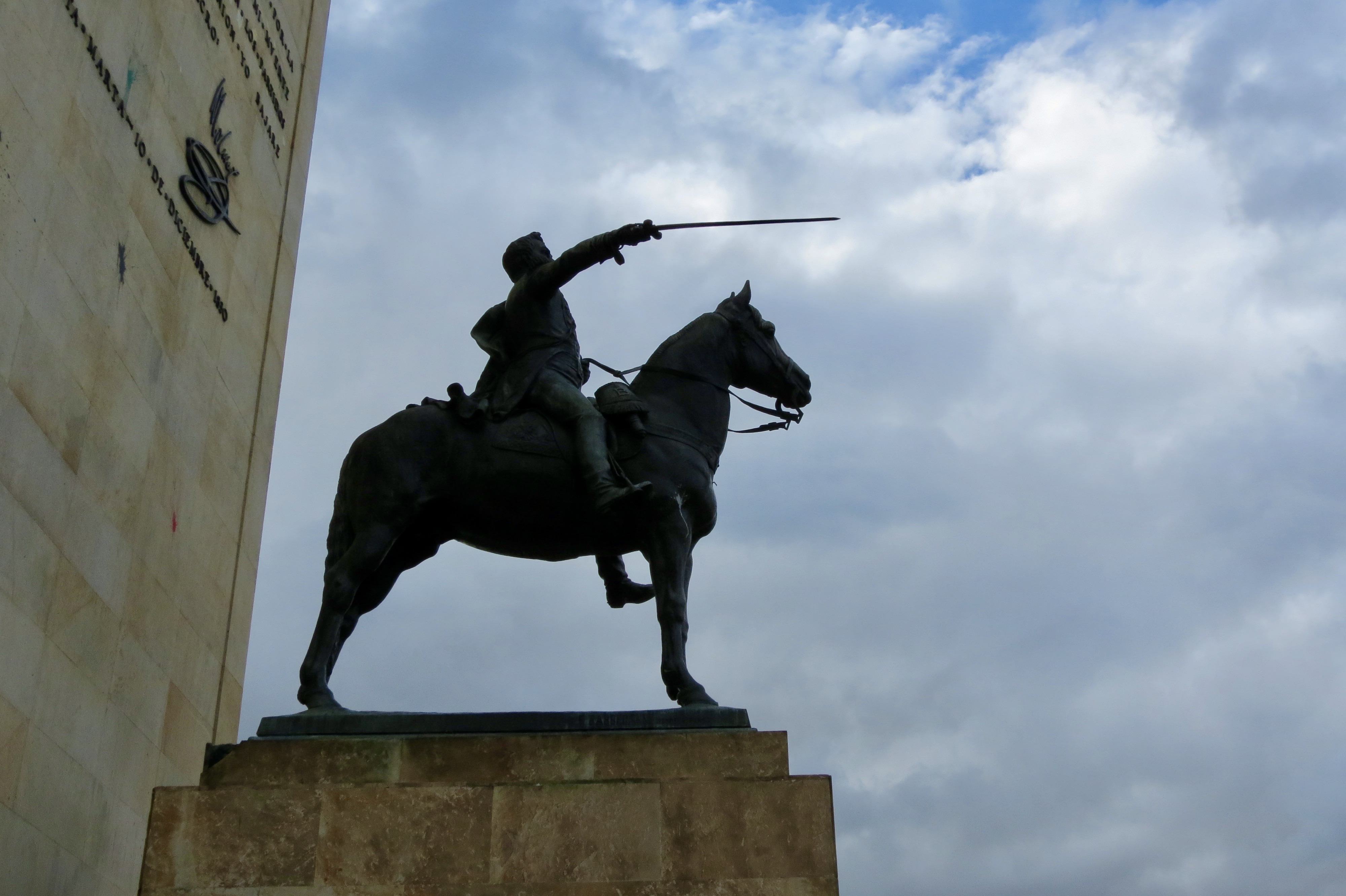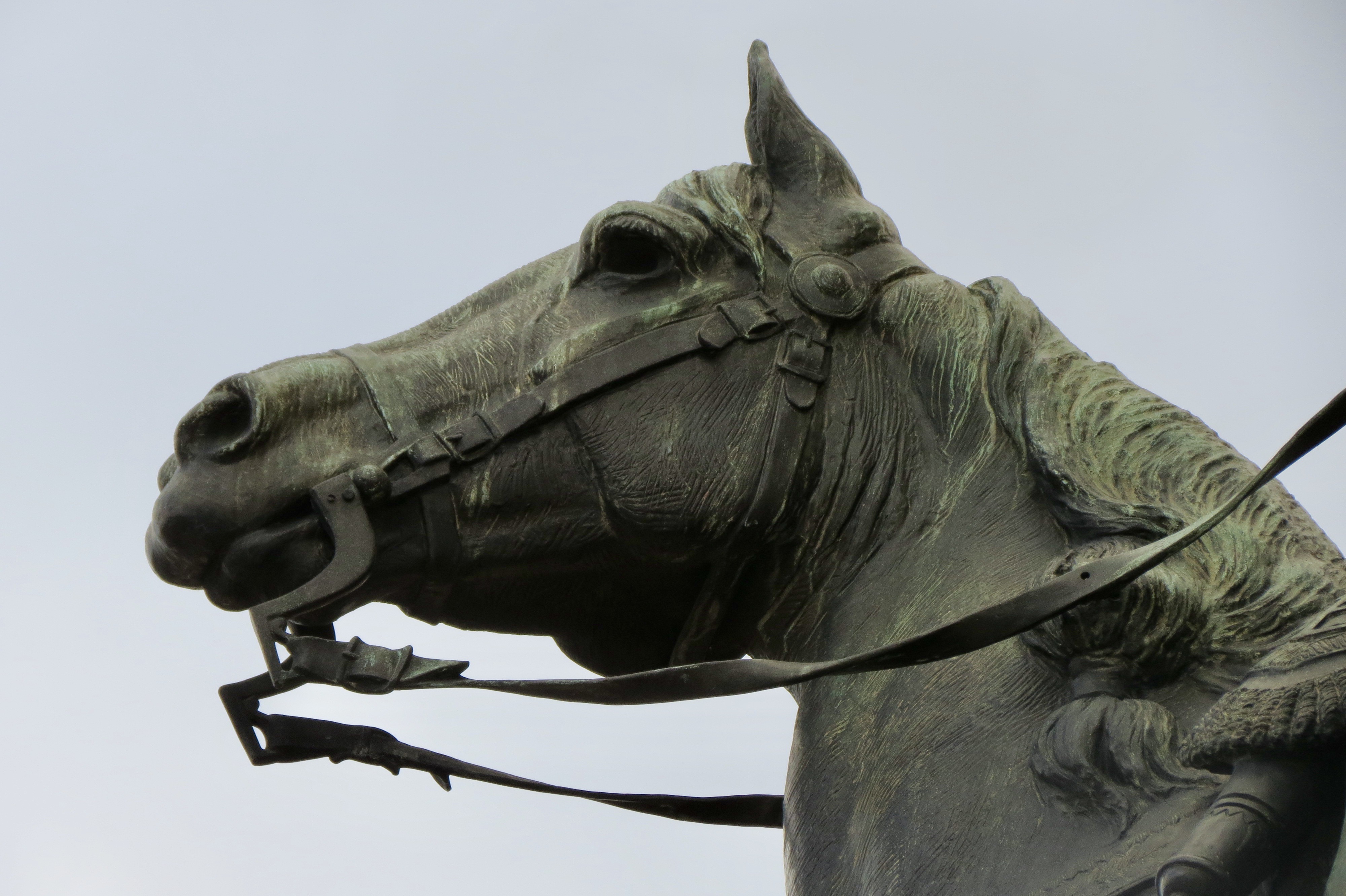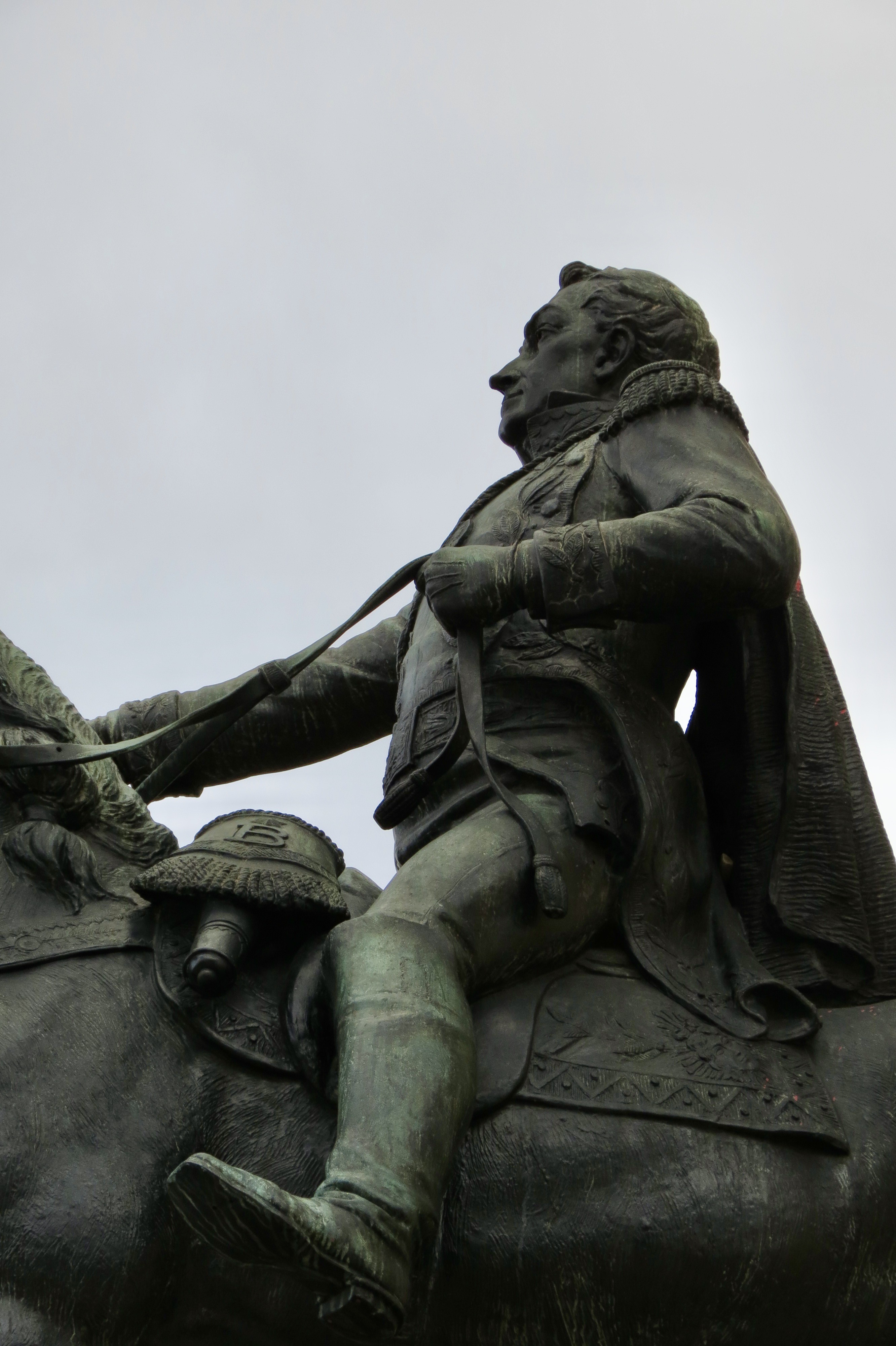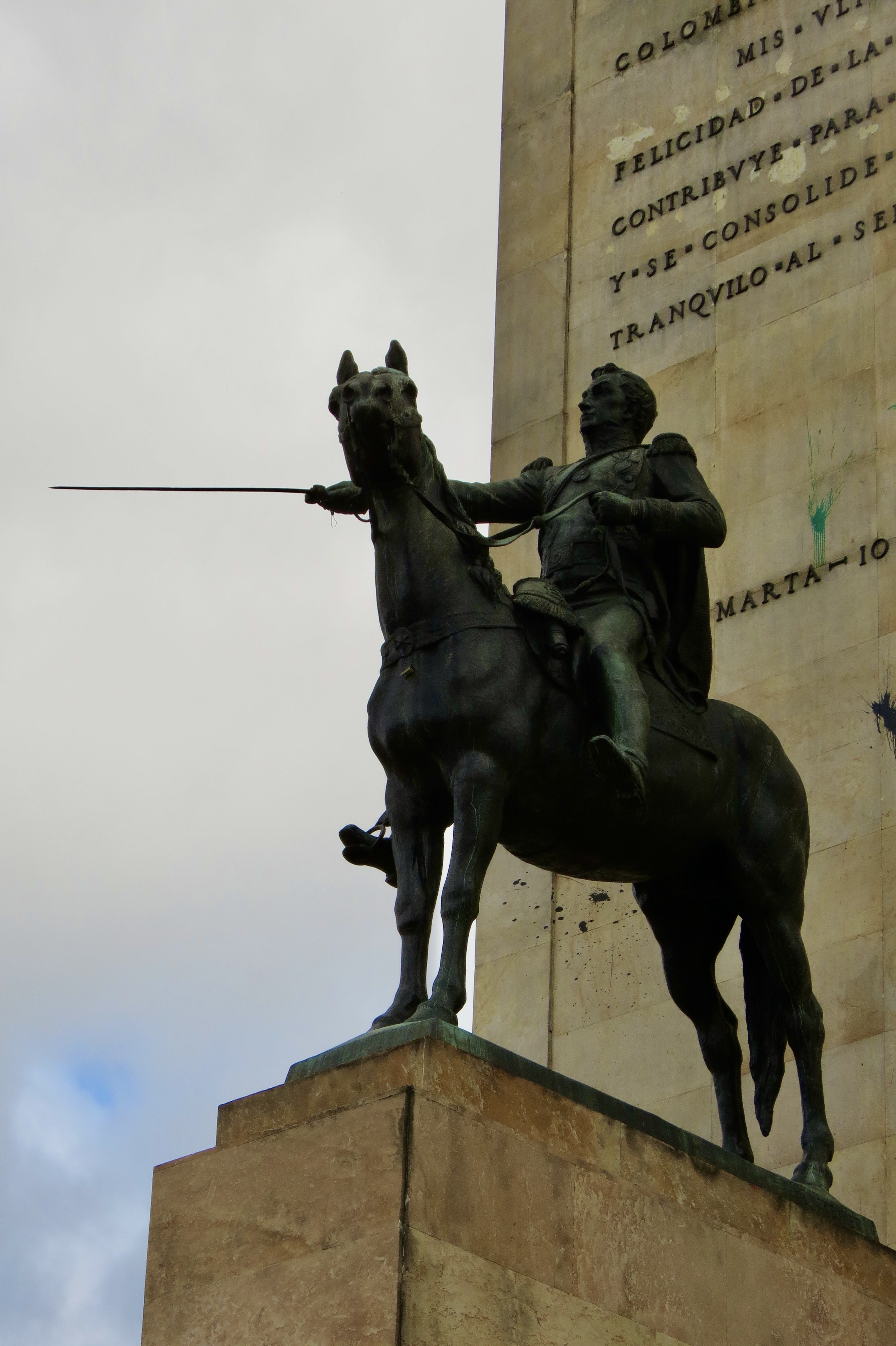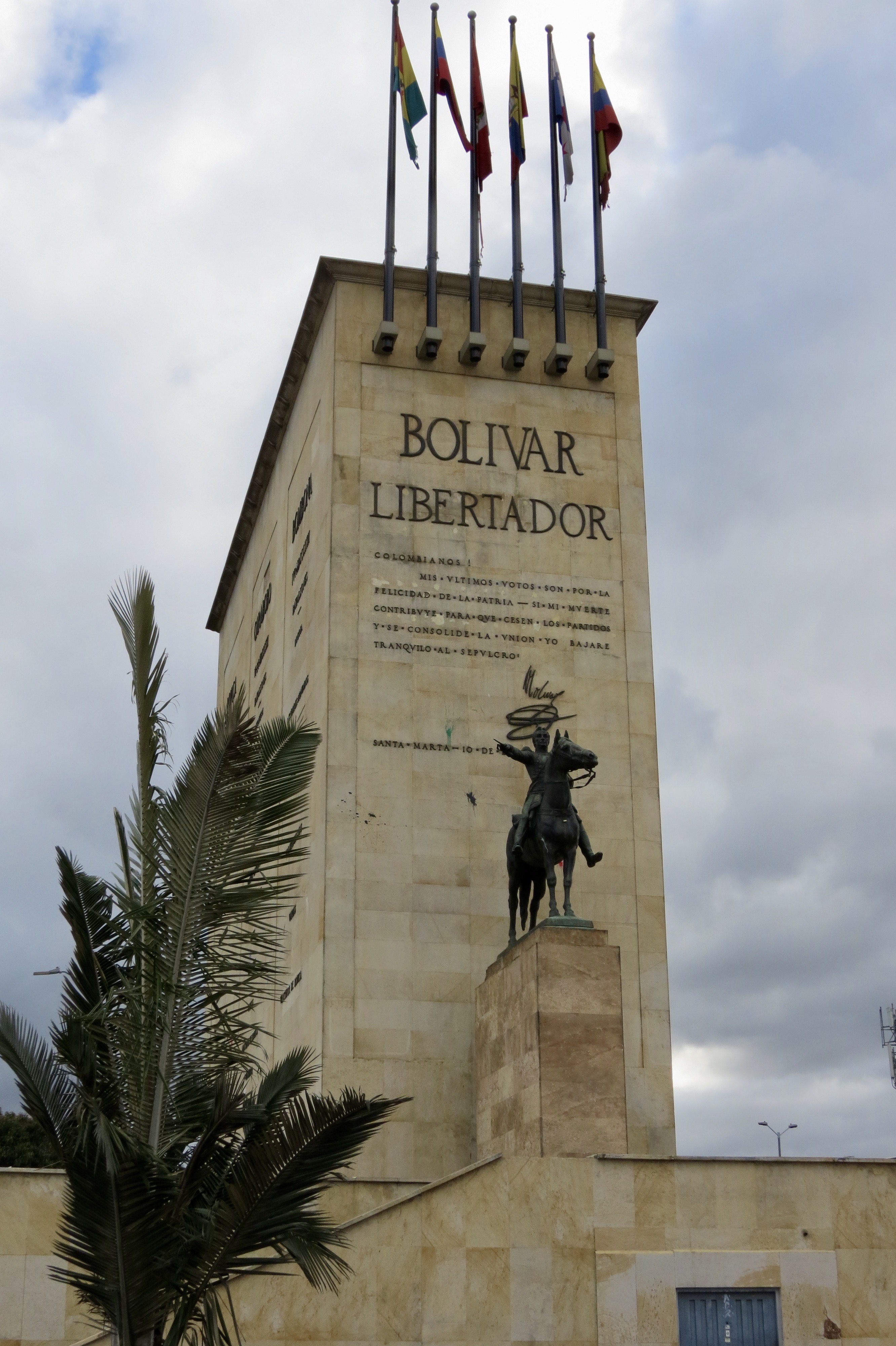- CountryColombia
- Town:Bogota
-
Year of creation:1910
- Rider(s):Bolivar, Simon
(1783 –1830) played a key role in liberating Venezuela, Colombia, Ecuador, Peru (together with José de San Martín), and Boliviafrom Spanish rule.
Born in Venezuela, Bolivar got a great deal of his education in France and Spain. He returned to Venezuela and got a military command in New Granada (nowadays Colombia) in 1813. In 1819 he successfully finalized a campaign for the independence of New Granada and launched from this stronghold independence campaigns in Venezuela and Ecuador, which he concluded with victories in 1821 and 1822. He became President of the new state Gran Colombia, which covered much of nowadays Colombia, Panama, Venezuela, Ecuador, northern Peru and the northwest of Brazil. In 1822 he took over the task of José de San Martin of fully liberating Peru.
Assisted by Antonio José de Sucre, Bolívar defeated the Spanish forces in 1824, resulting in the creation of the Republic of Bolivia, a country named after its liberator. Bolívar had great difficulties maintaining control of the vast Gran Colombia. After failing to write a new constitution, he proclaimed himself dictator in 1828, meant as a temporary measure to reestablish his authority and to save the republic. He survived an assassination attempt in 1828. Two years of uprisings followed. Bolivar resigned his presidency in 1830 and died in the same year, before he could go into exile in France as he intended.
Bolivar was an admirer of George Washington. They shared the same objective: independence for their people and the establishment of a democratic state. They differed, however, on two important matters. Bolivar was anti-slavery, despite coming from an area that relied heavily on slave labor, and he did not believe that the US system could function in Latin America, claiming that the governance of heterogeneous societies like Gran Colombia “will require an infinitely firm hand”.
- Sculptor(s):Frémiet, Emmanuel
(1824–1910) was born in Paris into a family with close ties to the art world. He received his formal training in art at the age of five at a private school in Paris and was accepted at the prestigious Ecole des art decoratifs at the age of thirteen. He devoted himself right from the start to being a sculptor of animals; an animalier. He is famous for his equestrian statue of Jeanne d’Arc in Paris.
-
When Monumento A Los Héroes was inaugurated in 1963, in remembrance of those who gave their lives during the Independence campaign in South America, it towered over Bogotá’s most northern limits.
Los Héroes also has a French connection as the bronze sculpture of a horse-mounted Simon Bolívar was created by Emmanuel Frémiet (1824-1910) in Paris, an artist most famously known for his golden Jeanne d’Arc that graces the Place des Pyramides. The statue of Bolívar was one of Frémiet’s final works.
While the representation of the Catholic martyr is one of the most visited monuments in Paris, few tourists descend on Los Heroes as an attraction, despite it being one of few examples of Italian fascist architecture on the continent. In Italy, however, Mazzoni’s work was very prolific, having designed in the 1920s and 30s the railway stations of Siena, Trento, Reggio Emilia, Bolzano, Venezia Santa Lucia, Messina and Roma Termini, as well as post offices and home of Mussolini’s mother Rosa Maltoni in Pisa. When Mussolini’s regime collapsed at end of World War II in Europe, Mazzoni exiled himself in Bogotá, where he lived until 1963.
Within the next couple of months Los Heroes’ historical timeline faces the ax, hammer, and power-drill after the mayoralty of Bogotá announced that the monument must be relocated in order for construction to begin of the first line of the Metro. Already strangled by access roads and designated bus lanes, Bolívar and horse Palomo must now find a new home so that the metro can move passengers from Calle 170 to the city center. According to Metro de Bogotá, the company in charge of operating the city’s elevated transport system, two possible locations are being considered for the heroes of Independence: Portal de las Américas or Calle 72.
Moving monuments in Bogotá is nothing new, but Los Heroes will out-weigh them all, as the tower includes a deep vault and four floors used as exhibition space for art installations.

